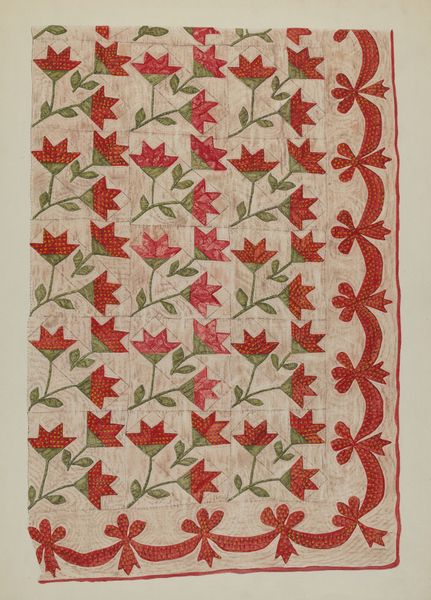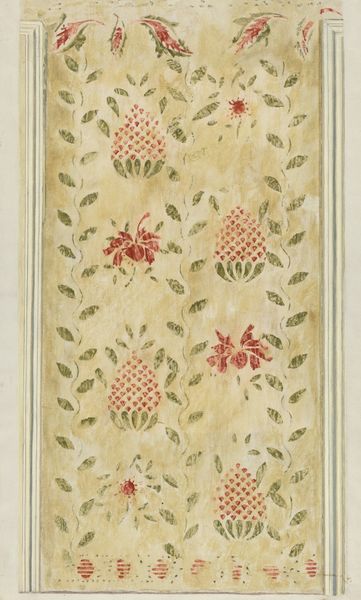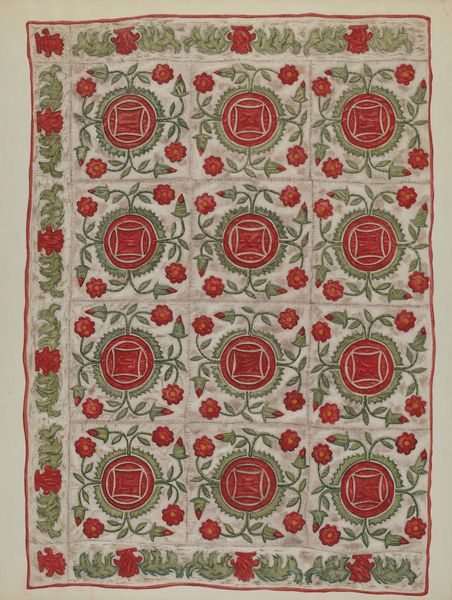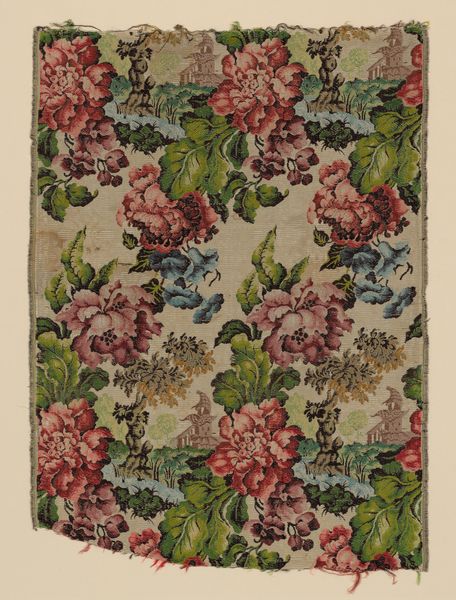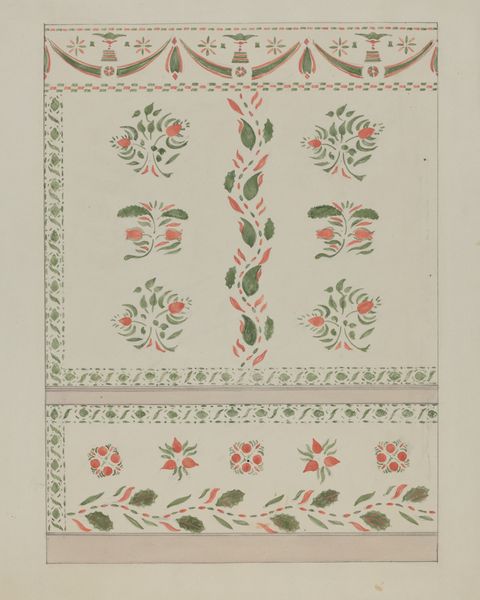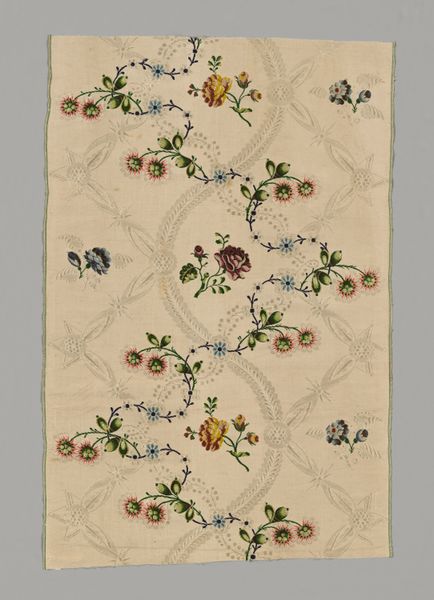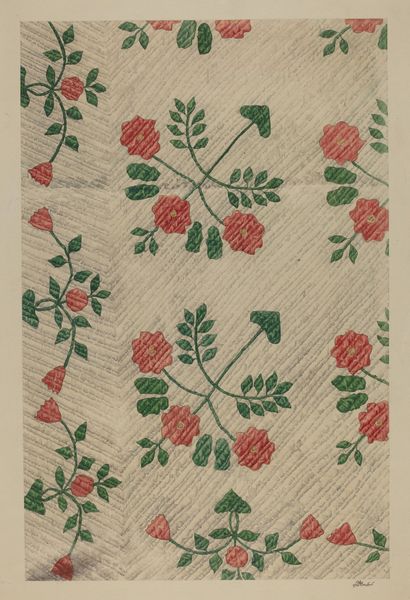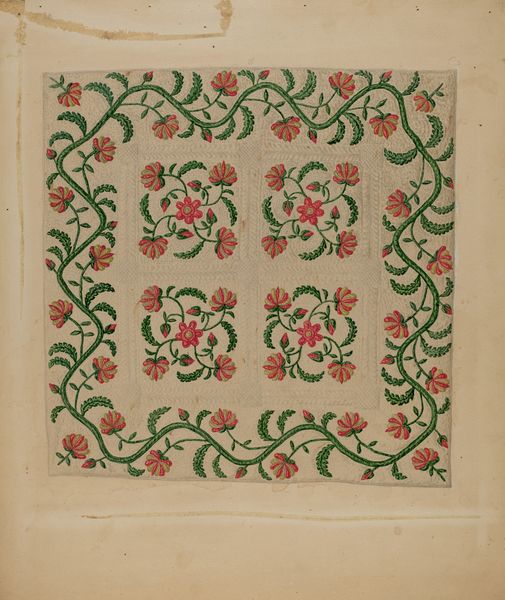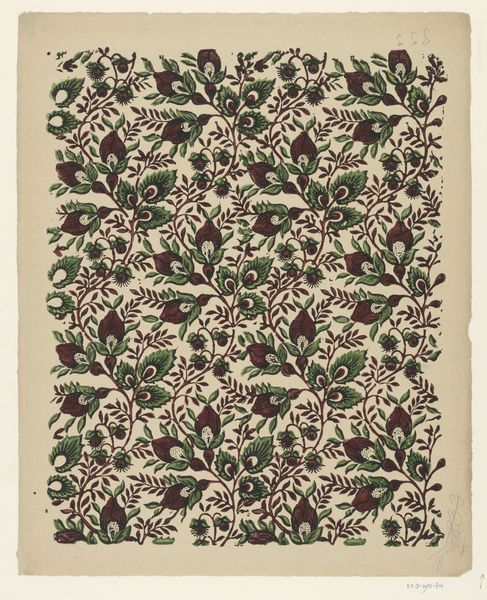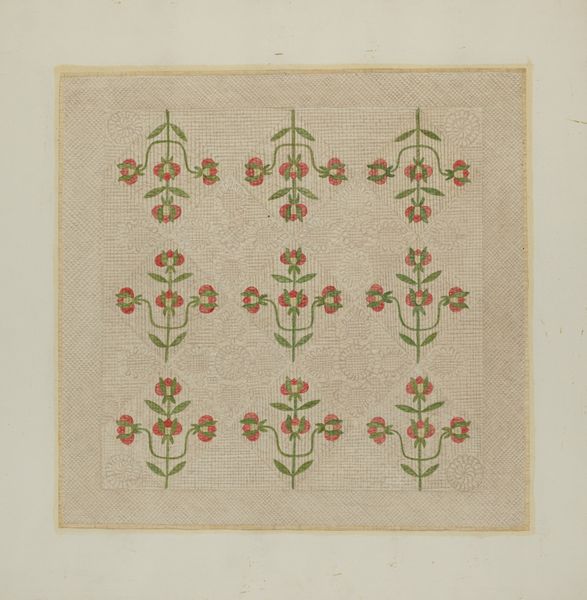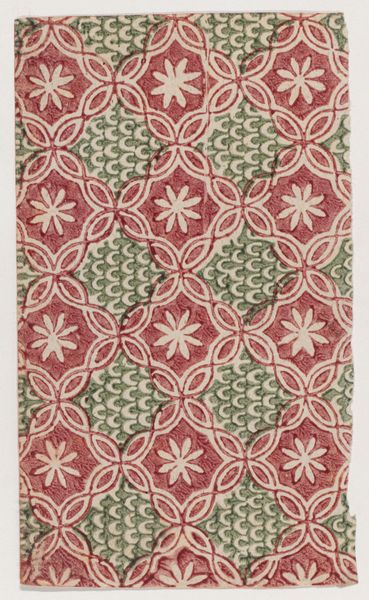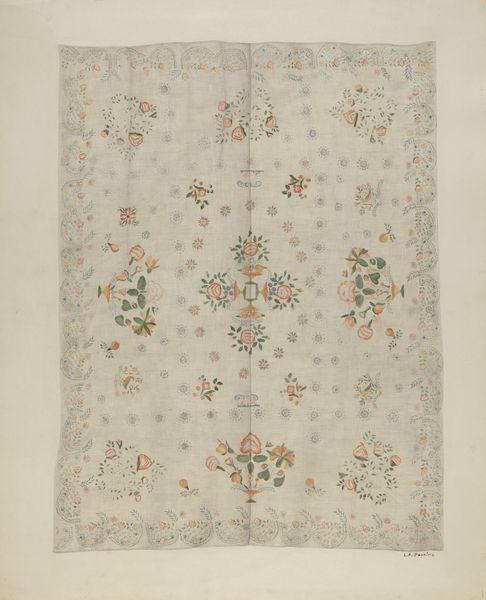
textile
#
organic
#
folk-art
#
textile
#
folk-art
#
textile design
Dimensions: overall: 36.9 x 29.2 cm (14 1/2 x 11 1/2 in.) Original IAD Object: 88" long; 78" wide
Copyright: National Gallery of Art: CC0 1.0
Curator: Looking at this "Tulip Pattern Quilt," made around 1937 by Mabel Ritter, my first thought goes straight to its material composition. It's all about textile and process for me. Editor: It’s quite soothing, isn’t it? A very gentle rhythm. The muted reds and greens… almost like a faded memory. I wonder about its original context. Curator: Well, consider the labor that went into this. Each stitch represents time, skill, and potentially, resistance to mass-produced alternatives. How was the textile sourced, dyed? Was it for domestic use or perhaps a sale item contributing to the household income? These are the pressing questions! Editor: Absolutely vital questions. And I'd also think about how quilts at the time served not just practical functions, but powerful symbolic ones as well. Quilts were frequently used to commemorate significant life events, build community, or signal socio-political allegiances, such as support for abolition or suffrage, especially as folk-art objects were starting to gain increased institutional support and recognition. Curator: Right, but folk art wasn't viewed as “high art." Examining it now highlights the artificiality of those distinctions. Ritter employed the textile to both decorate and construct. Her tools weren’t paintbrushes but needles, thread, and the very material of everyday life. It challenges a kind of formal art education which valorizes some mediums and degrades others. Editor: The repeating tulip motif could be laden with local or even national significance as well. There’s such a history behind how textiles have been circulated as diplomatic gifts to represent goodwill. Consider the politics of that representation. Who decides which cultural products get elevated on the international stage? Curator: Interesting perspective, indeed! Looking at how something like textile and quilt making gets viewed critically raises valid considerations concerning class, taste, and social production within material culture itself. Editor: Absolutely. A seemingly simple quilt holds so many threads—no pun intended—to explore these intersections. Curator: Indeed! A worthwhile artistic creation that calls to re-think materiality and gender. Editor: A wonderful point—making clear that a seemingly quotidian textile design has such compelling art historical resonances!
Comments
No comments
Be the first to comment and join the conversation on the ultimate creative platform.
